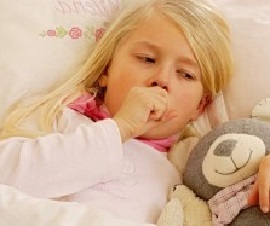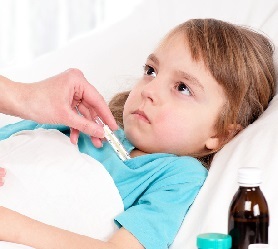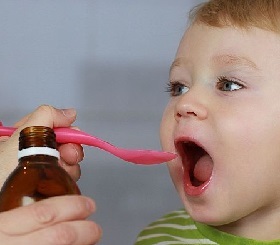 Obstructive bronchitis is a disease of the upper respiratory tract, in which the mucous membranes of the trachea and bronchial tree are most actively affected.
Obstructive bronchitis is a disease of the upper respiratory tract, in which the mucous membranes of the trachea and bronchial tree are most actively affected.
It can manifest itself in an acute form, acquire the characteristic features of chronic obstructive bronchitis and pass into bronchial asthma. In general, bacterial and viral infections are provoked by the development of the disease.
Bronchi - a branched network of tubes, with different diameters, letting air in. He acts, passing through the larynx, the bronchi and enters the lungs. When the infection gets into the bronchi and they become inflamed, there is a disturbance of the air circulation and the movement of air to the lungs becomes more difficult. Obstructive bronchitis is in fact acute bronchitis, which occurs with the syndrome of bronchial obstruction.
To obstructive bronchitis in children, it has not acquired an acute or chronic form, it is necessary to know about its causes, methods of treatment (in this will help the advice of Dr. Komarovsky) and the features of prevention.
What causes contribute to the development of the disease?
Let's first consider the word "obstructive". This name comes from the word obstruction, which means squeezing, constriction or spasm. The concept of "bronchitis" comes from the word bronchus, which means the name of the pulmonary department in the human body.
To summarize: obstructive bronchitis is the constriction of the bronchi or spasm, as a result of which the accumulated mucus can neither go outside and thus impedes breathing.
The causes of obstructive bronchitis in children are attributed;
- allergic inflammation of the bronchi - is associated with the allergic reaction of the child (dust, pollen, animal hair, etc.);
- viral infections;
- supercooling or overheating;
- passive smoking - in addition to the fact that in general inhaling of tobacco smoke leads to a decrease in immunity, also smoke provokes excessive release of mucus, which can become a bronchial obstruction;
- polluted ecological situation;
- frequent crying, during which the natural functions of breathing are violated;
- birth trauma and health in the first 2 years of a child's life;
- high humidity in leads to the formation of fungus indoors, which provokes bronchial obstruction;
It is necessary to take measures immediately after the diagnosis. How to treat obstructive bronchitis in children will depend on the severity of the symptoms, as well as the age of the child and his state of health.
Symptoms
The first signs of bronchitis are a runny nose and a dry cough that intensifies at night. The sick child feels weakness, pain behind the sternum, usually they are very restless, moody, there is increased nervous excitability.
Additional features:
- There are signs of complicated expiratory breathing, its frequency and expiration time increases, it is noisy and is accompanied by a whistle that is audible from a distance.
- Sometimes the baby's chest is visually enlarged in size.
- Appears pallor of the skin.
- Cough is initially unproductive and infrequent.
- Body temperature is low or normal.
- At the later stages of the disease, wet wheezing occurs.
- X-rays show signs of bloating.
In older children, acute obstructive bronchitis is sometimes accompanied by angina or cervical lymphadenitis, it has a prolonged course.
Symptoms of obstructive bronchitis in children
 Most often, the first episode of obstructive bronchitis develops in a child in the 2-3rd year of life. In the initial period, the clinical picture is determined by symptoms of acute respiratory distress syndrome - high body temperature, throat rash, runny nose, general malaise. Dyspeptic symptoms often develop in young children.
Most often, the first episode of obstructive bronchitis develops in a child in the 2-3rd year of life. In the initial period, the clinical picture is determined by symptoms of acute respiratory distress syndrome - high body temperature, throat rash, runny nose, general malaise. Dyspeptic symptoms often develop in young children.
Bronchial obstruction can be associated already in the first day of the disease or in 2-3 days. At the same time there is an increase in the frequency of breathing (up to 50-60 per min.) And the duration of exhalation, which becomes noisy, wheezing, audible at a distance.
In addition to tachypnea, expiratory or mixed dyspnea in children with obstructive bronchitis, involvement in the respiratory act of the auxiliary musculature, an increase in the anteroposterior size of the thorax, the retraction of its compliant places during breathing, the swelling of the wings of the nose.
Cough in children with obstructive bronchitis is unproductive, with sparse phlegm, sometimes painful, paroxysmal, not bringing relief. Even with a damp cough, sputum dries out with difficulty.
Pale skin or perioral cyanosis is noted. Manifestations of obstructive bronchitis in children may be accompanied by cervical lymphadenitis. Bronchoconstriction lasts 3-7 days, disappears gradually as the inflammatory changes in the bronchi subscribe.
Prevention
First of all, the prevention of obstructive bronchitis in children is to strengthen immunity: the preservation of breastfeeding at least a year, more outdoor walks, a varied and healthy diet, taking vitamins, hardening.
In addition, it is very important to treat colds in a timely and correct manner, without allowing the development of complications. Self-medication is the first enemy of health. Although the consequences may not manifest themselves immediately. What is misleading the parents about the harm of their actions.
Treatment of obstructive bronchitis in children: Komarovsky
Details about the symptoms, as well as how to treat obstructive bronchitis in children will tell a famous specialist - Dr. Komarovsky. Recommended for viewing to all parents.
Stages of treatment
Acute obstructive bronchitis in children is a serious pathology that does not go on for a long time without treatment or is complicated inflammation of the lungs, the development of respiratory failure and metabolic disorders in the body tissues.
There are several situations where the presence of obstructive bronchitis in children requires urgent treatment in a hospital:
- The presence of obstruction in the baby.
- If the symptoms develop such symptoms as very high temperature, general drowsiness and lethargy, nausea and a decrease in appetite.
- The appearance of signs of insufficiency in the breathing, such as acrocyanosis and severe shortness of breath.
From hospitalization and treatment of obstructive bronchitis in a child with the above symptoms in a hospital You can not refuse, because under the mask of ordinary bronchitis, dangerous acute pneumonia may disappear.
The purpose of therapy for this disease is to eliminate the causes that caused it, the removal of bronchial obstruction, improving the functioning of the respiratory system, symptomatic treatment depending on the manifestations. First of all, measures are taken to cleanse the bronchi from mucus, bronchodilator and anti-inflammatory measures are prescribed.
Medicines
Antiviral drugs are shown in the early days of the disease. Young children use candles (Genferon), drops in the nose (Grippferon), syrups (Orvir), from the age of 3 can be used tablet form (Arbidol, Kagocel, etc.).
Antibiotic therapy is not an obligatory component of the treatment of obstructive bronchitis, and the appointment and choice of the drug should be performed only by a doctor. Indications for the connection of antibiotics are:
- Heat for longer than 3 days;
- Severe intoxication;
- Inflammatory changes in blood tests;
- Purulent (yellow, yellow-green) sputum is a sign of bacterial involvement of the bronchi;
- Listened to by a pediatrician wet wheezing or other signs of possible pneumonia.
Inhalation
In order to reduce swelling and facilitate the passage of sputum, inhalation is used with a nebulizer inhaler with the use of special solutions, while creating a cold vapor of the smallest particles that are delivered to the lungs. This procedure is easy to apply.
A dry, painful cough and hard-to-separate sputum are treated with mucolytics, such drugs, stimulate the spitting out of the child and have an anti-inflammatory effect. For children use a solution or syrup, such drugs are administered through the mouth. Abolition of mucolytic drugs should be when a child has a productive cough with a sputum discharge.
Means for coughing
 Effective treatment is based on the provision of sputum discharge. For such purposes, mucoregulatory agents are prescribed. They are aimed at dilution of viscous sputum and its rapid separation. Drugs are popular:
Effective treatment is based on the provision of sputum discharge. For such purposes, mucoregulatory agents are prescribed. They are aimed at dilution of viscous sputum and its rapid separation. Drugs are popular:
- Ambroxol;
- "Ambrogen";
- "Lazolvan";
- Bronhobos;
- Mukosol;
- "Flyuditek."
Ambroxol is very effective. It is often prescribed in the form of inhalation through a nebulizer. The course of treatment with the above means lasts 7-10 days.
After such treatment, the cough passes from paroxysmal, painful to wet. Sputum is less viscous, but does not depart well. At this stage, the mucoregulators are replaced with expectorants.
Preference is given to medicinal products of plant origin:
- Bronhosan;
- Bronchicum;
- Gedelix;
- "Herbion";
- "Bronchipret";
- "Tussin";
- "Doctor Mom";
- "Prospan";
- Doctor Theiss.
Antitussive codeine-containing drugs are not shown and can be recommended (only by a doctor) for obsessive paroxysmal dry cough with mandatory control of the child's condition and correction of treatment.
Massage and breathing exercises
A massage for sputum is very useful. The baby should tap lightly on the back of the hand with the edge of the palm. The older guys are told to take a breath and a slow, smooth exhalation, on which the tapping is performed.
Children are recommended special breathing exercises. Such exercises stimulate the body to get rid of sputum independently. Kids can be recommended to inflate a ball or blow out a candle.

How to choose probiotics for the intestine: a list of drugs.

Effective and inexpensive cough syrups for children and adults.

Modern non-steroidal anti-inflammatory drugs.

Review of tablets from the increased pressure of the new generation.
 Antiviral drugs are inexpensive and effective.
Antiviral drugs are inexpensive and effective.



